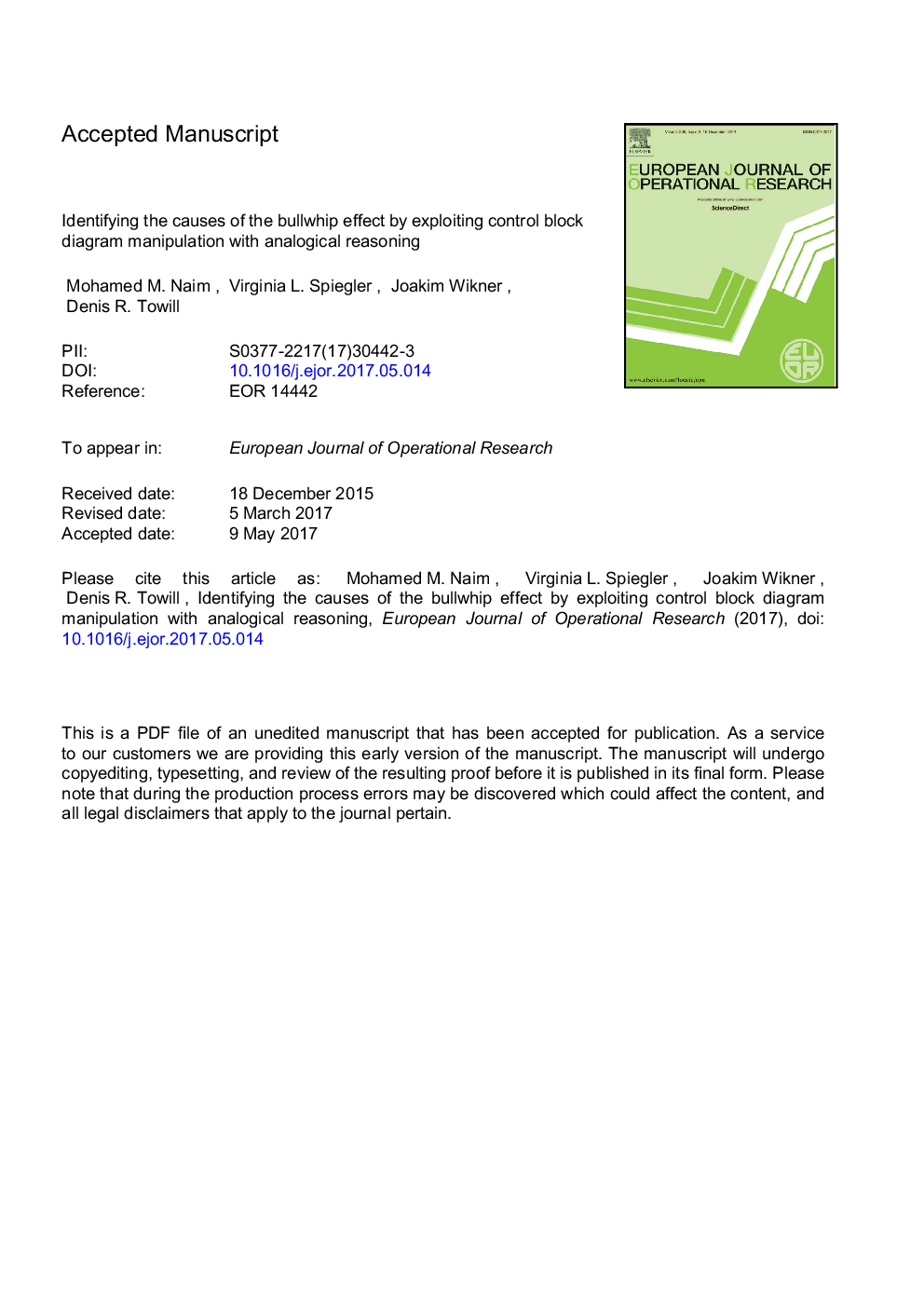| Article ID | Journal | Published Year | Pages | File Type |
|---|---|---|---|---|
| 4959616 | European Journal of Operational Research | 2017 | 15 Pages |
Abstract
Senior managers when solving problems commonly use analogical reasoning, allowing a current 'target problem' situation to be compared to a valid previous experienced 'source problem' from which a potential set of 'candidate solutions' may be identified. We use a single-echelon of the often-quoted Forrester (1961) production-distribution system as a case 'target model' of a complex production and inventory control system that exhibits bullwhip. Initial analogical reasoning based on 'surface similarity' would presuppose a classic control engineering 'source model' consisting of a phase-lag feedback system for which it is difficult to derive the transfer function. Simulation alone would have to be relied on to mitigate the bullwhip effect. By using z-transform block diagram manipulation, the model for a single-echelon, consisting of 17 difference equations with five feedback loops is shown to have exact analogy to Burns and Sivazlian's (1978) second order system that has no feedback. Therefore, this more appropriate 'source model' is based on a deeper understanding of the 'behavioral similarities' which indicates that the bullwhip effect is not in the case of the 'target model' due to feedback control but due to a first-order derivative, 'phase advance', term in the feed forward numerator path. Hence a more appropriate 'candidate solution' can be found via the use of a 'recovery' filter. An interdisciplinary framework for exploiting control engineering block diagram manipulation, utilizing analogical reasoning, in a practical setting is presented, as is an example in a contemporary supply chain situation.
Keywords
Related Topics
Physical Sciences and Engineering
Computer Science
Computer Science (General)
Authors
Mohamed M. Naim, Virginia L. Spiegler, Joakim Wikner, Denis R. Towill,
